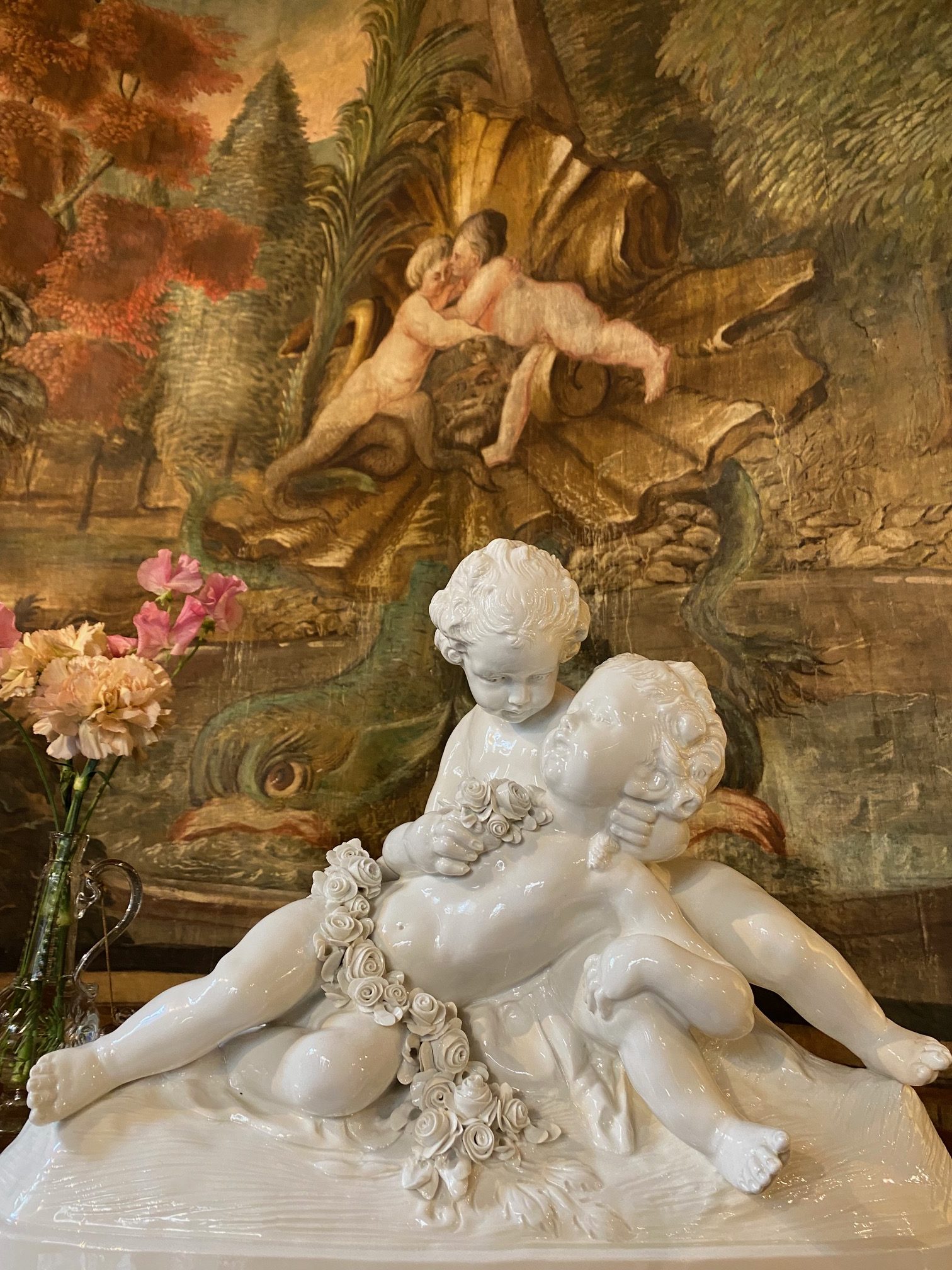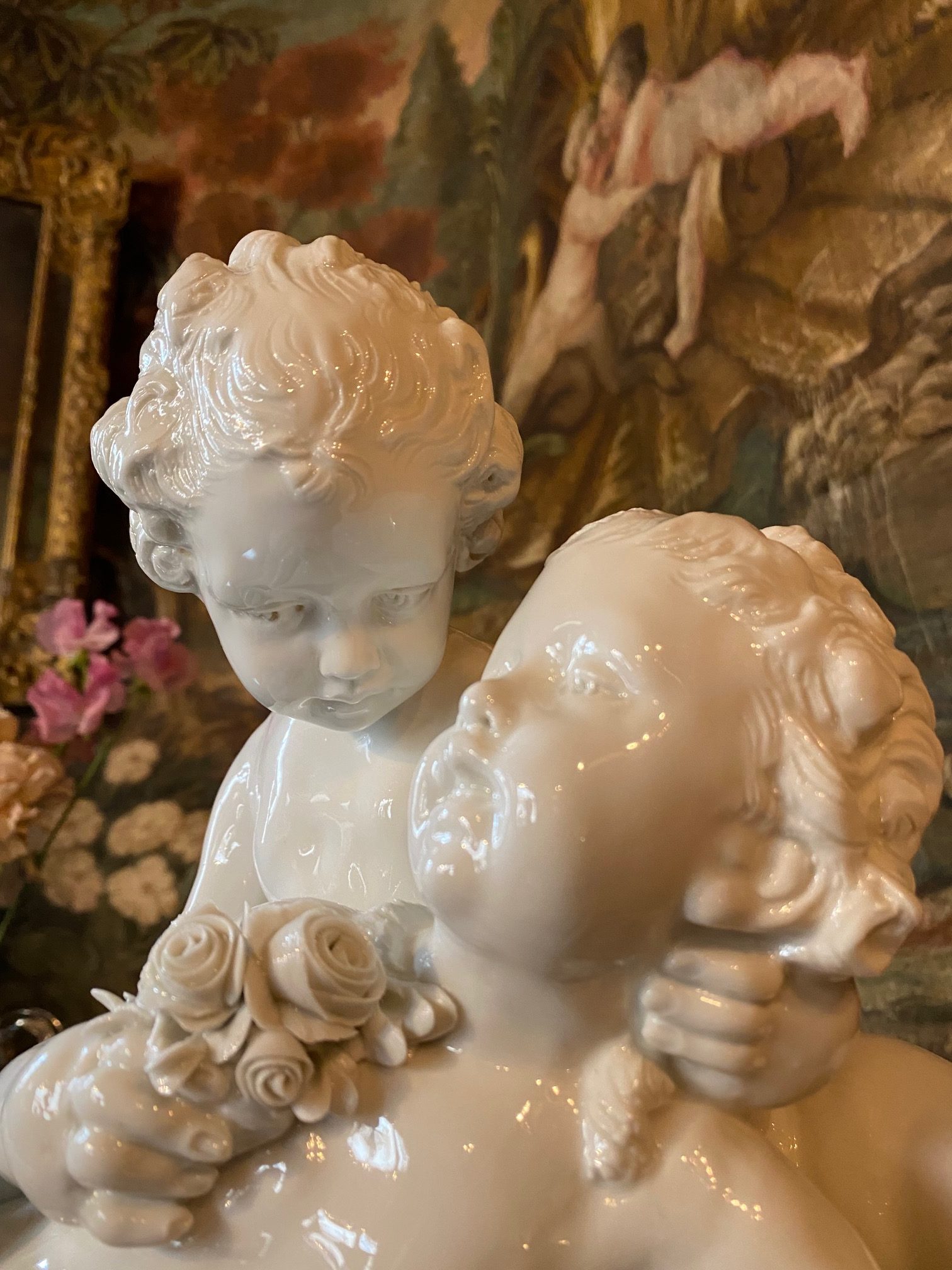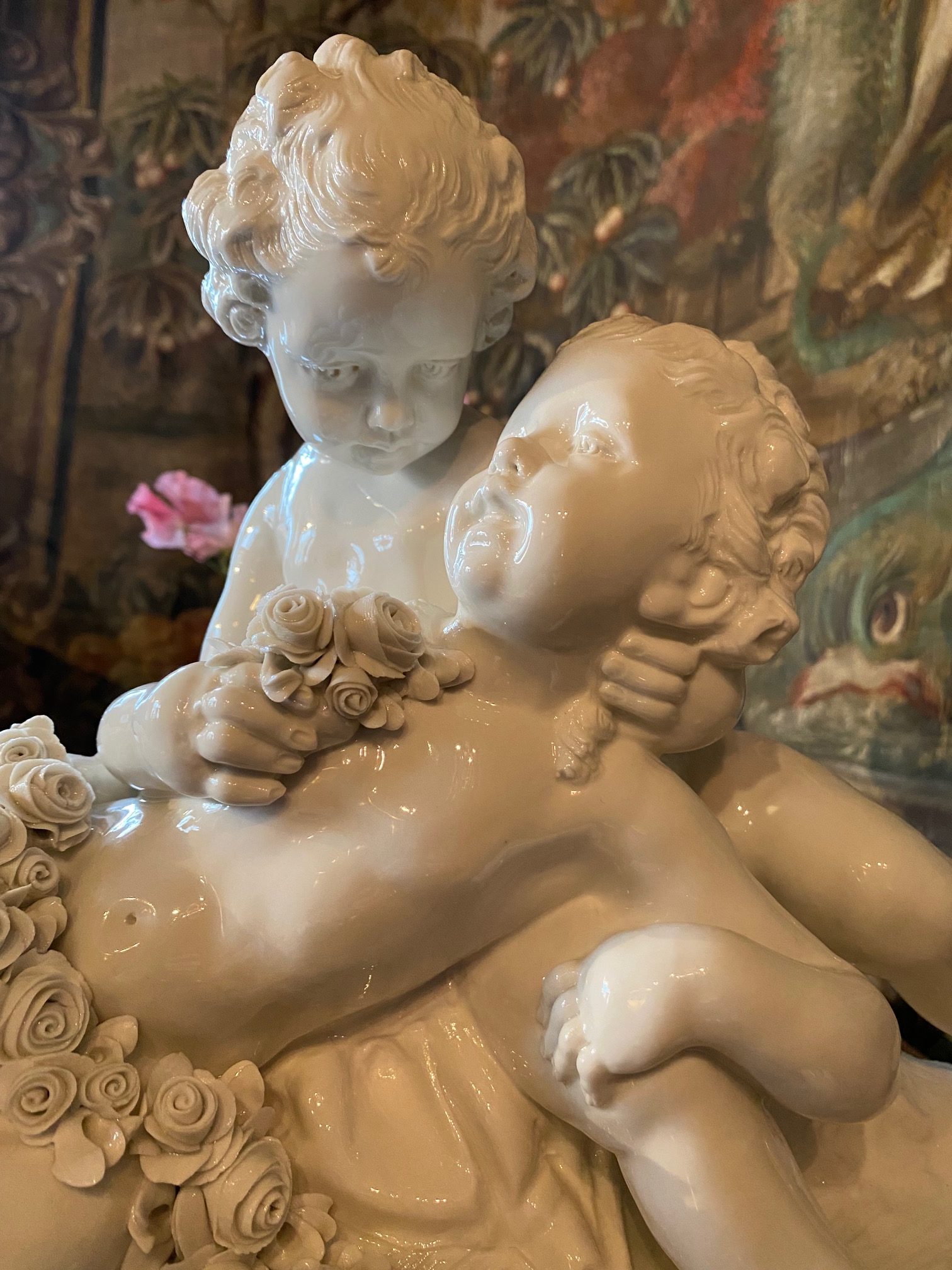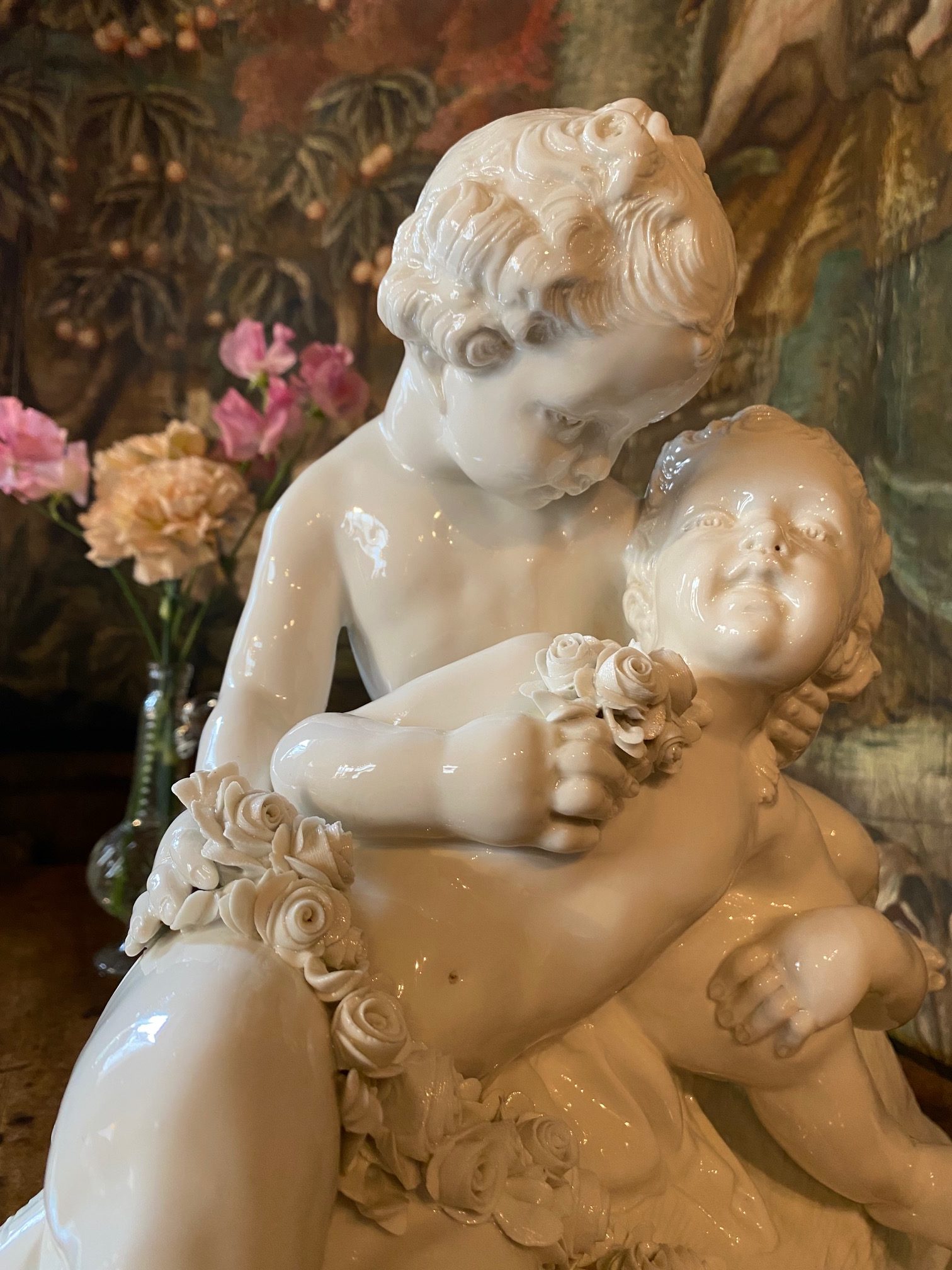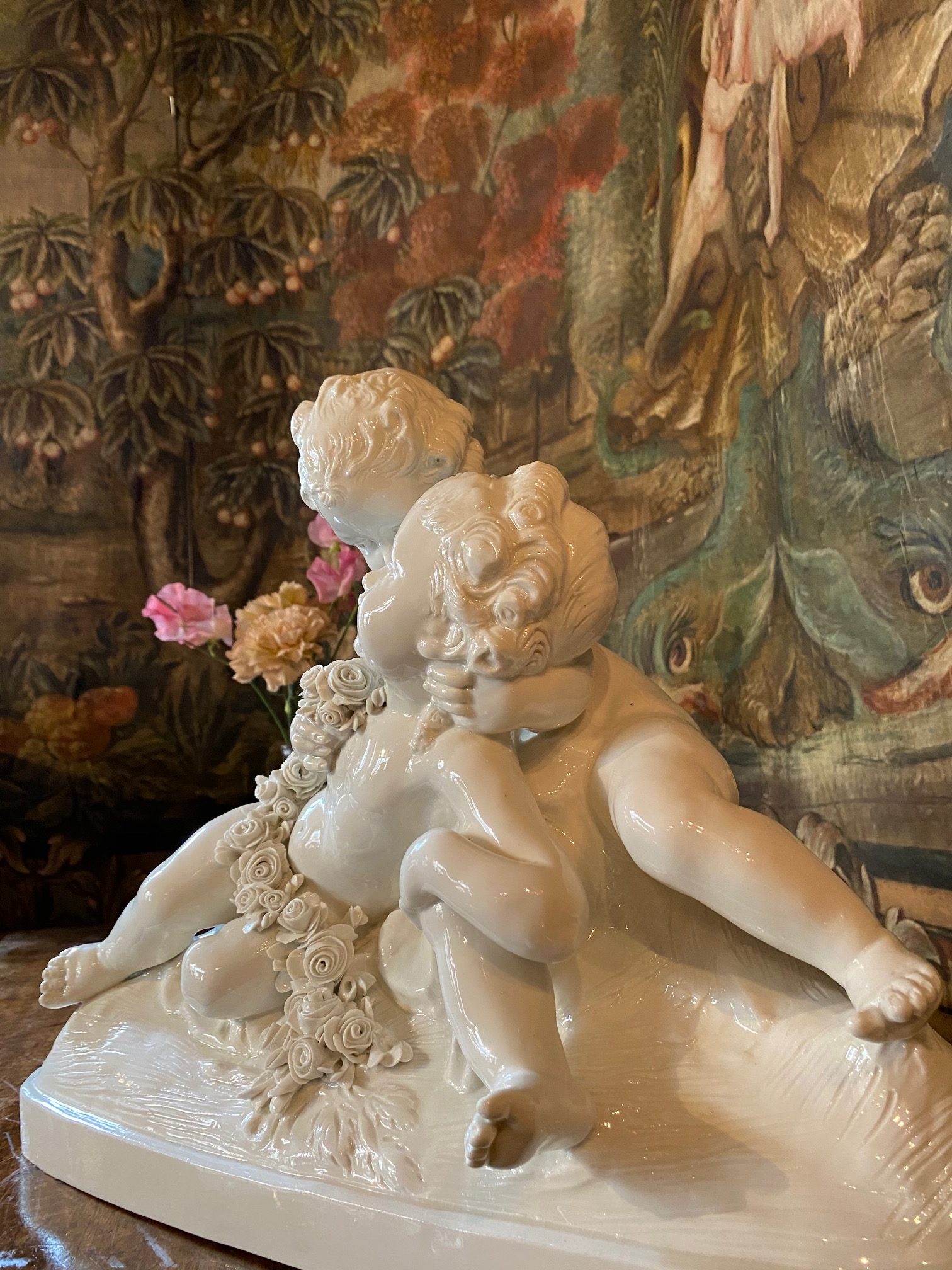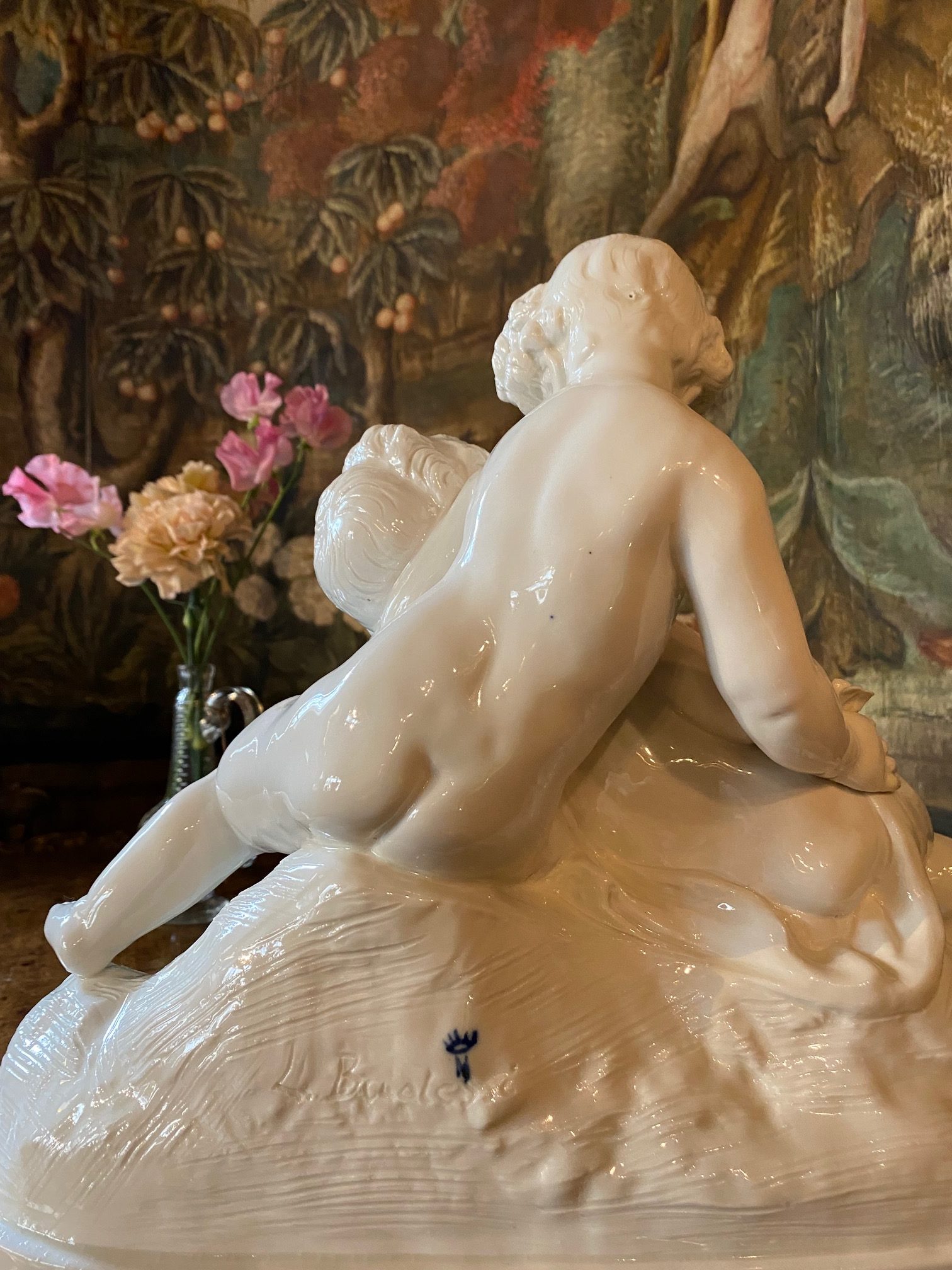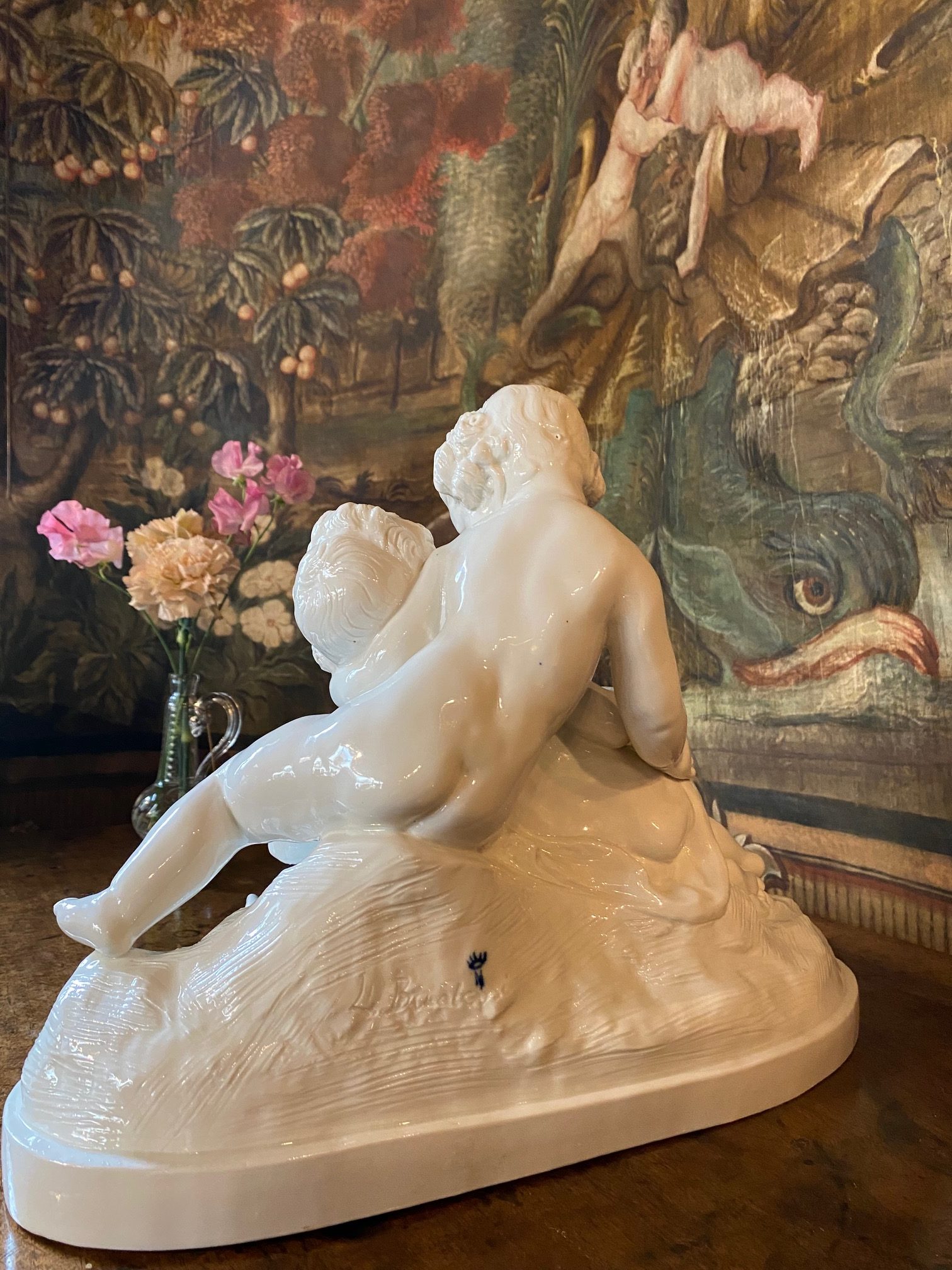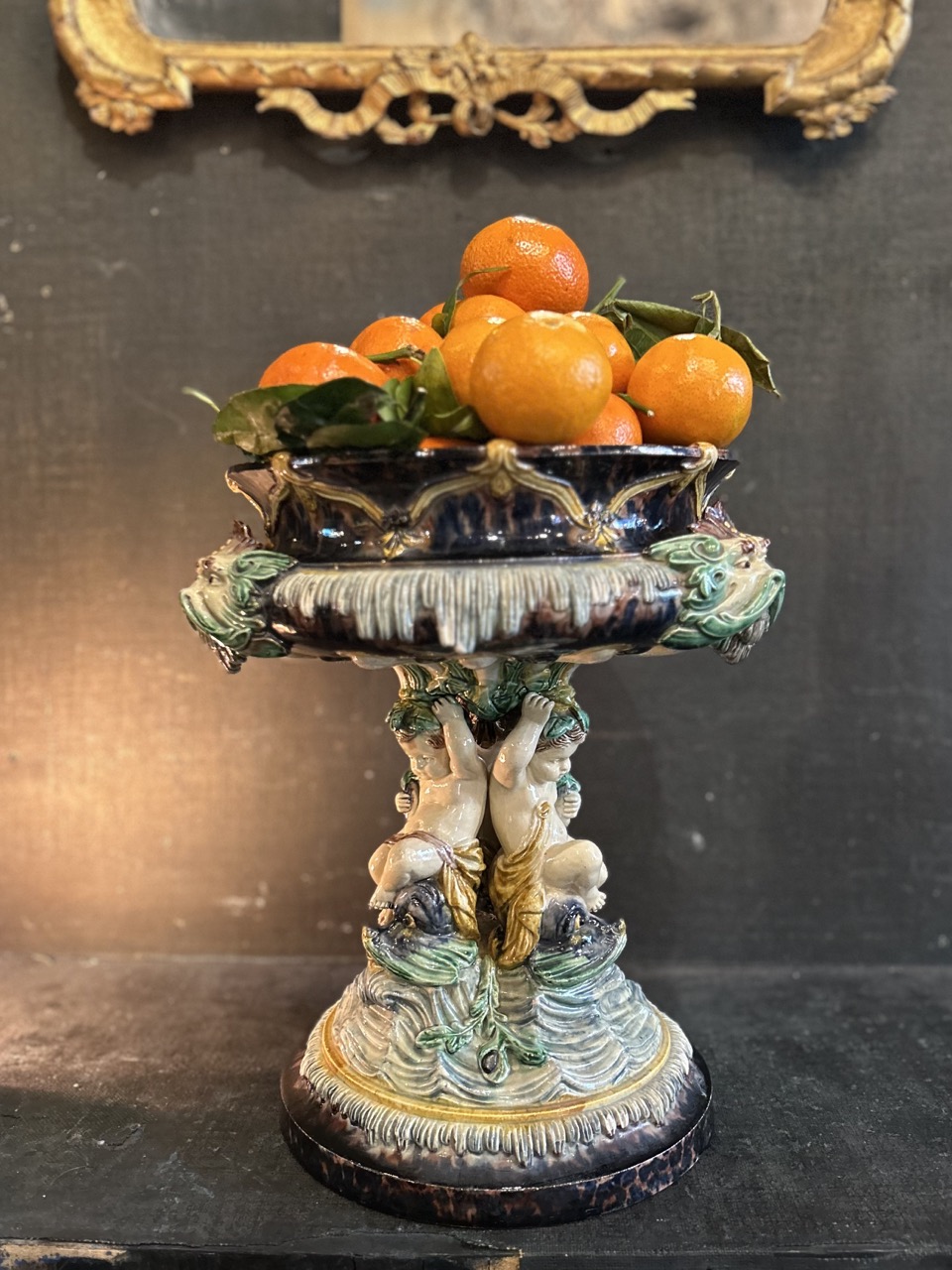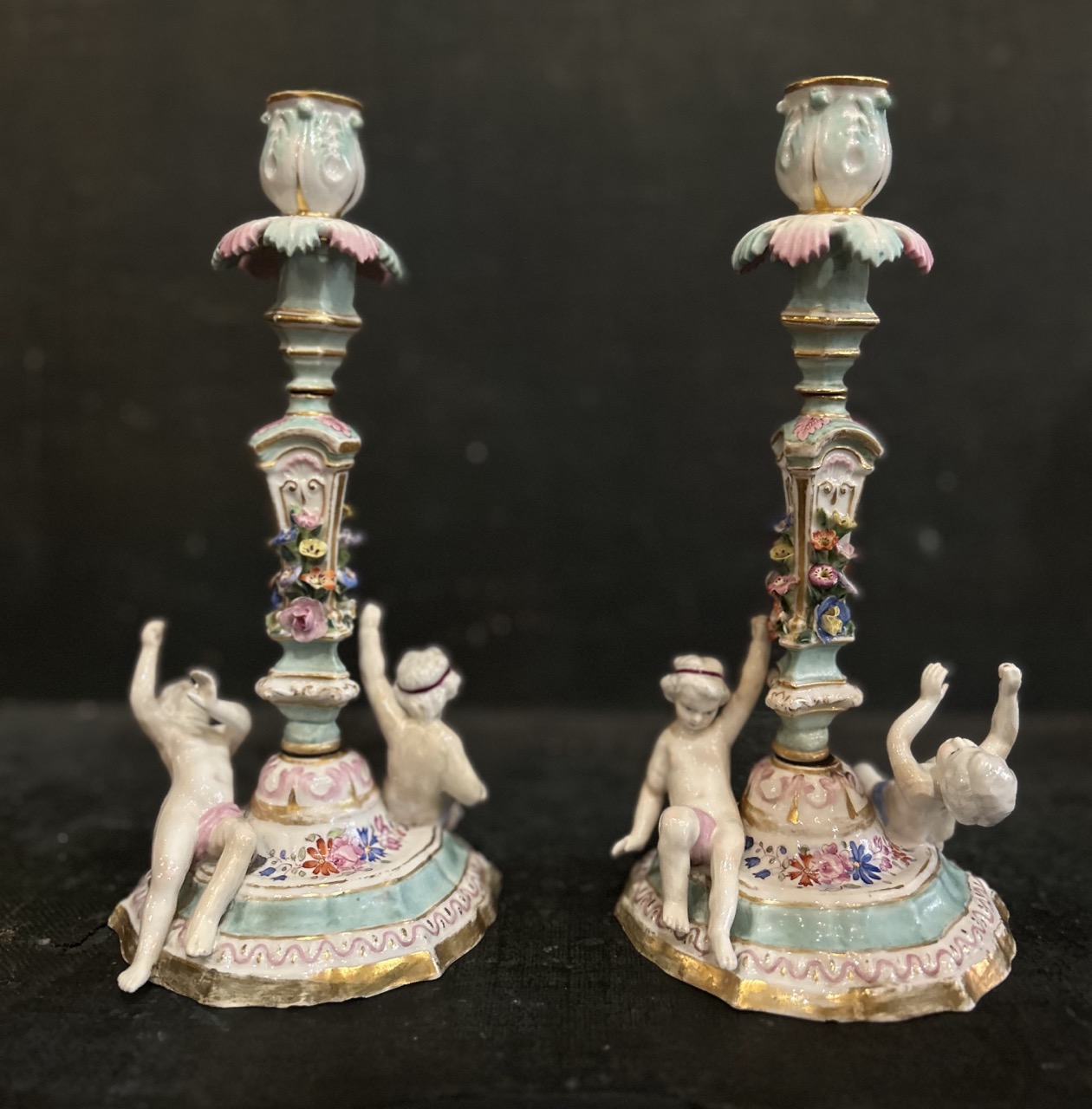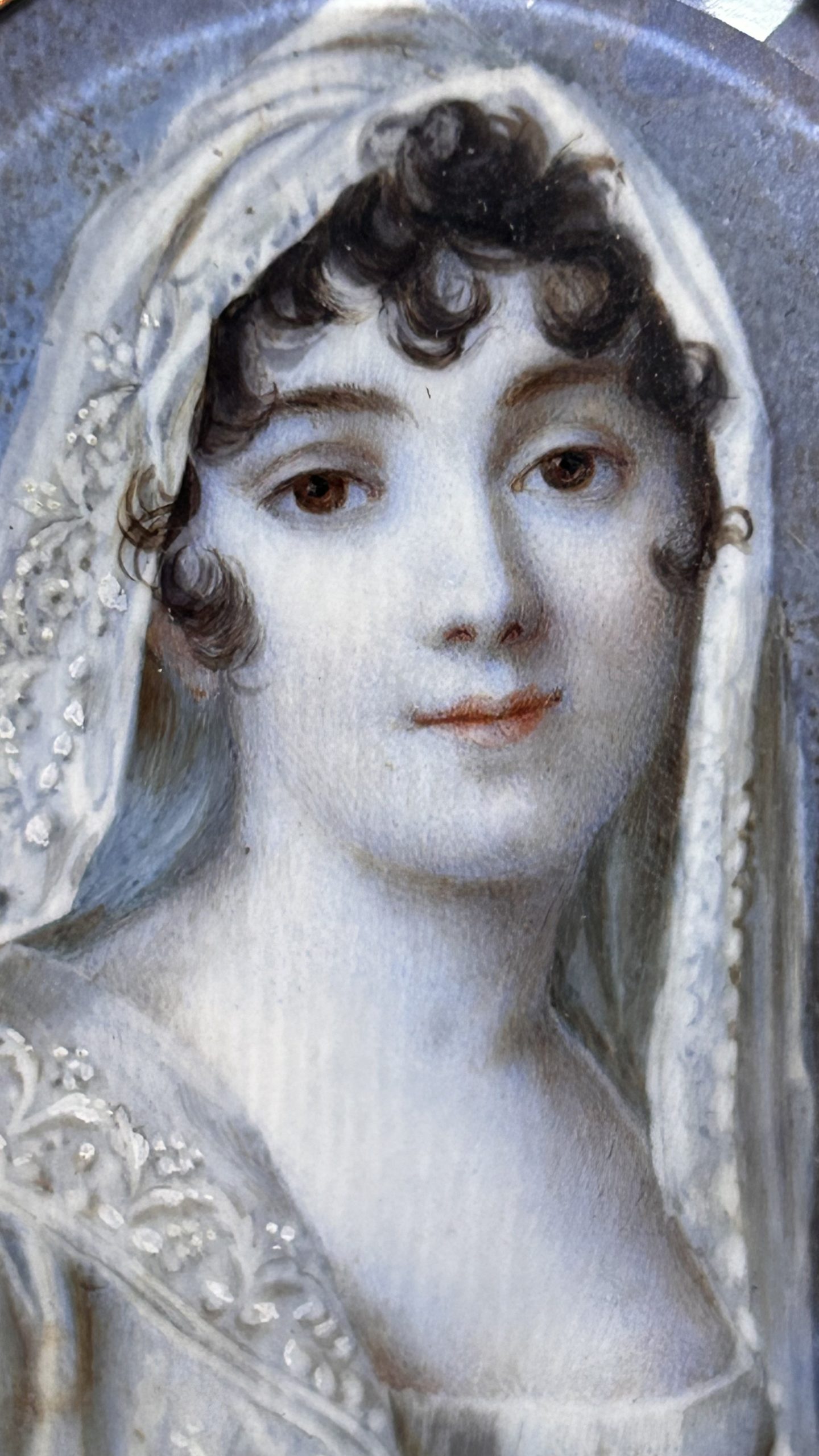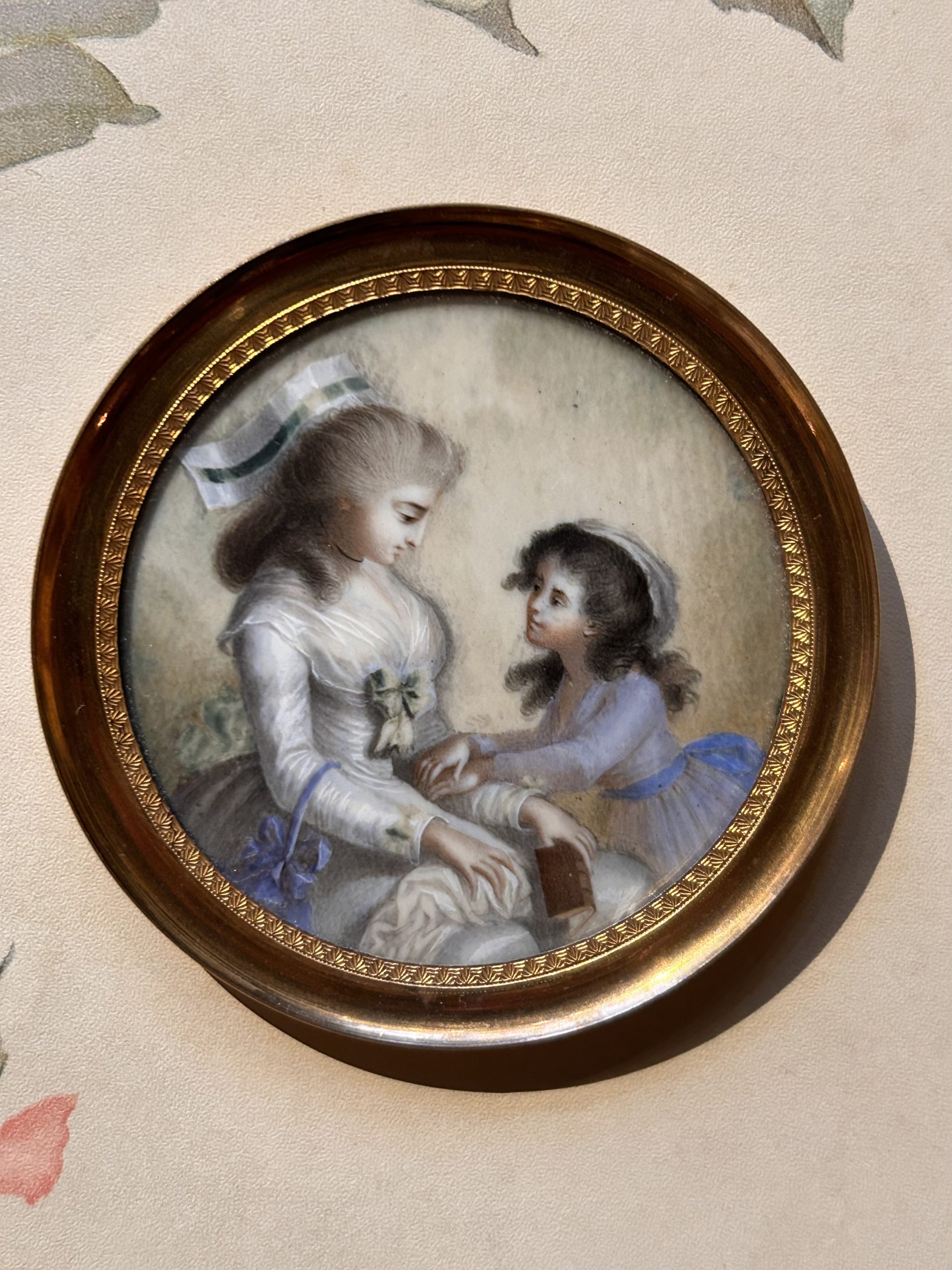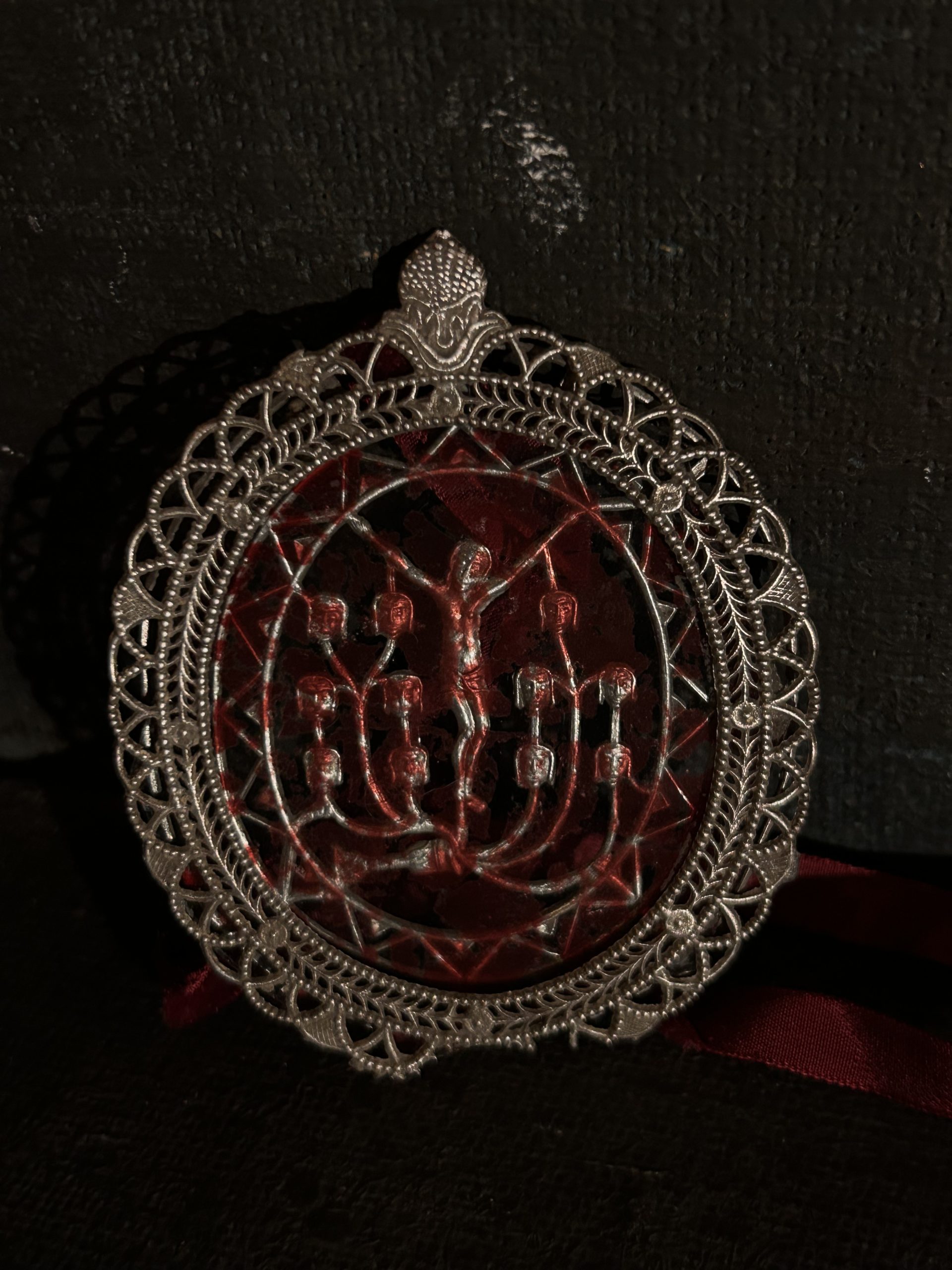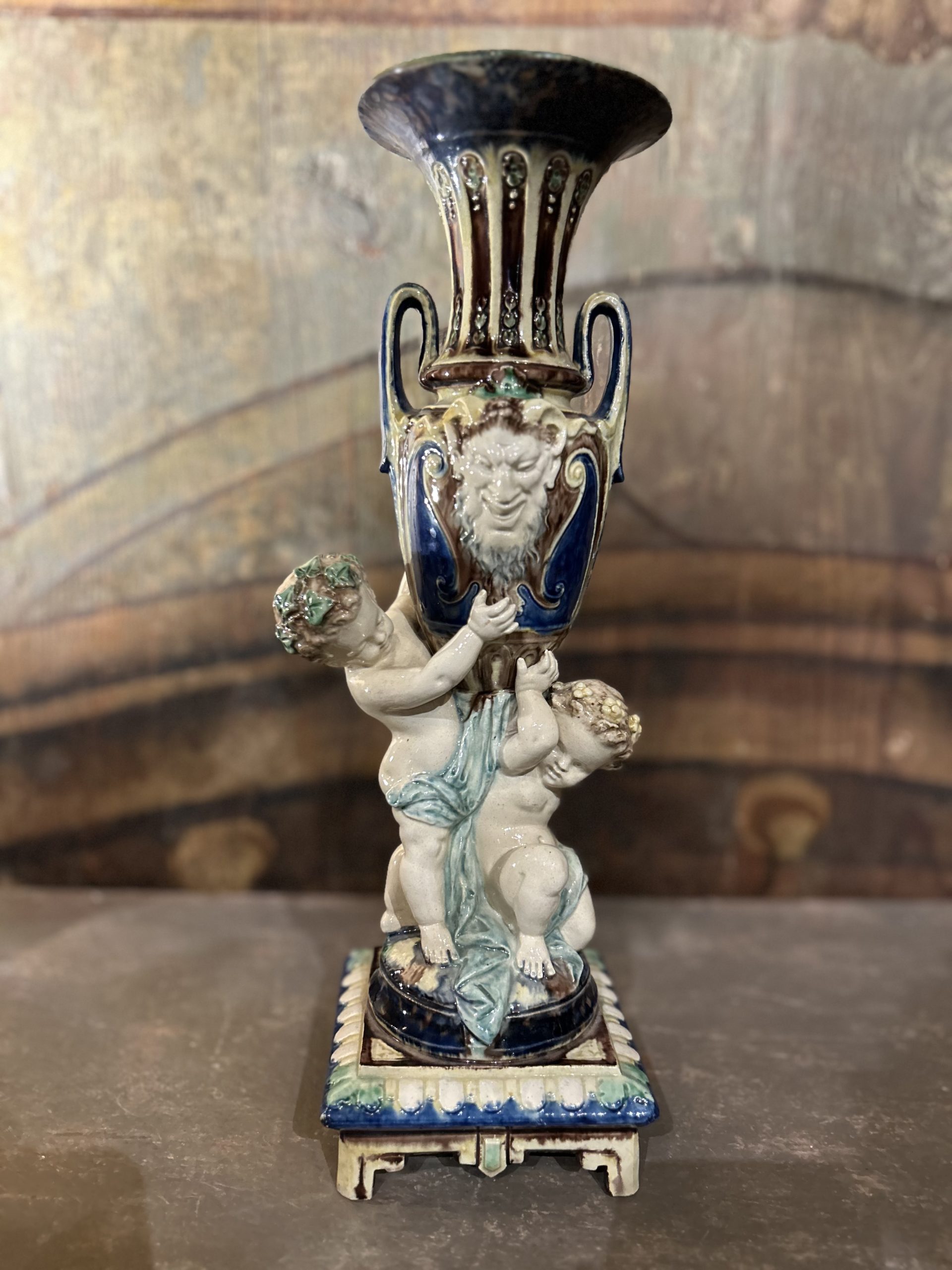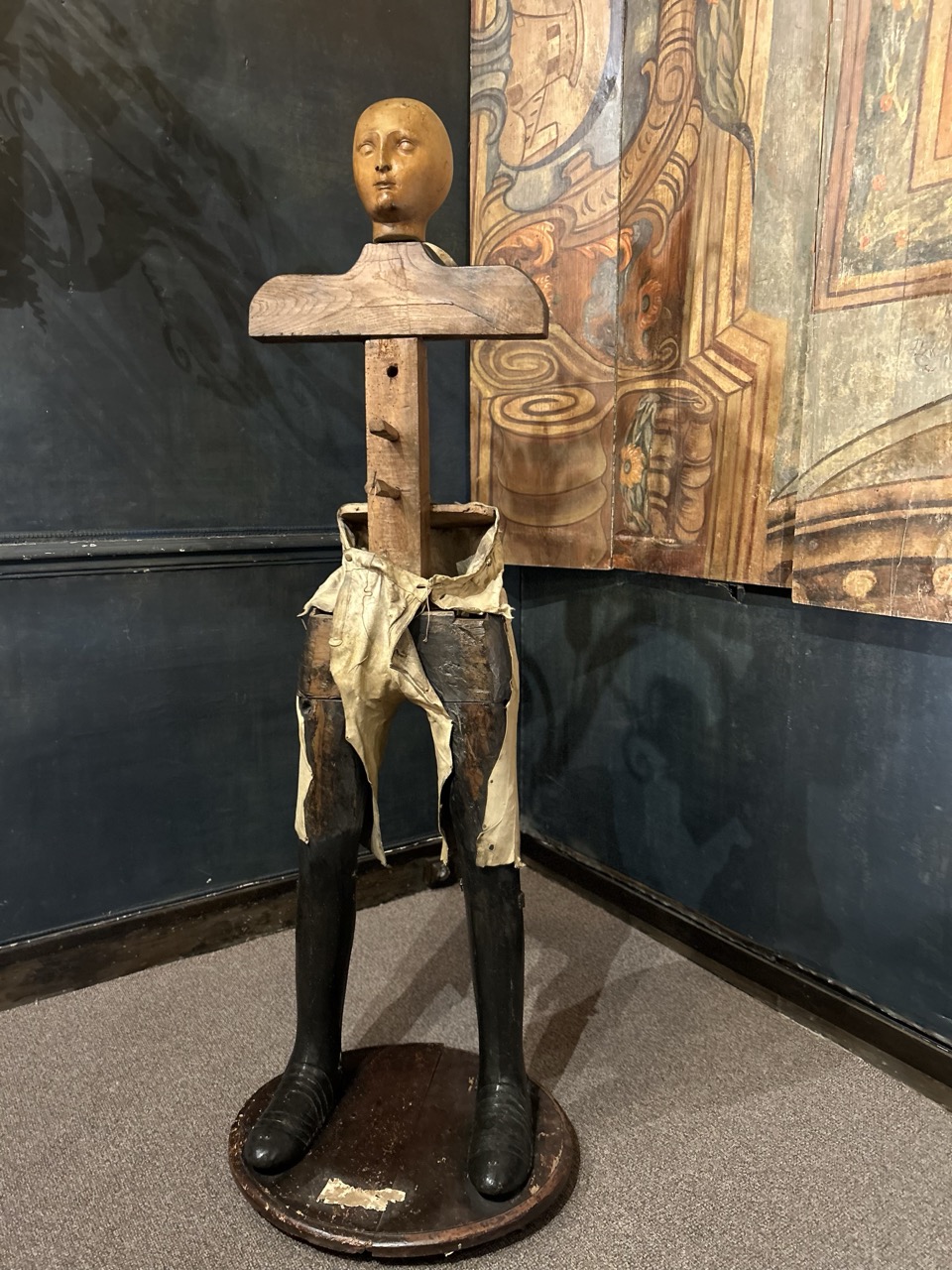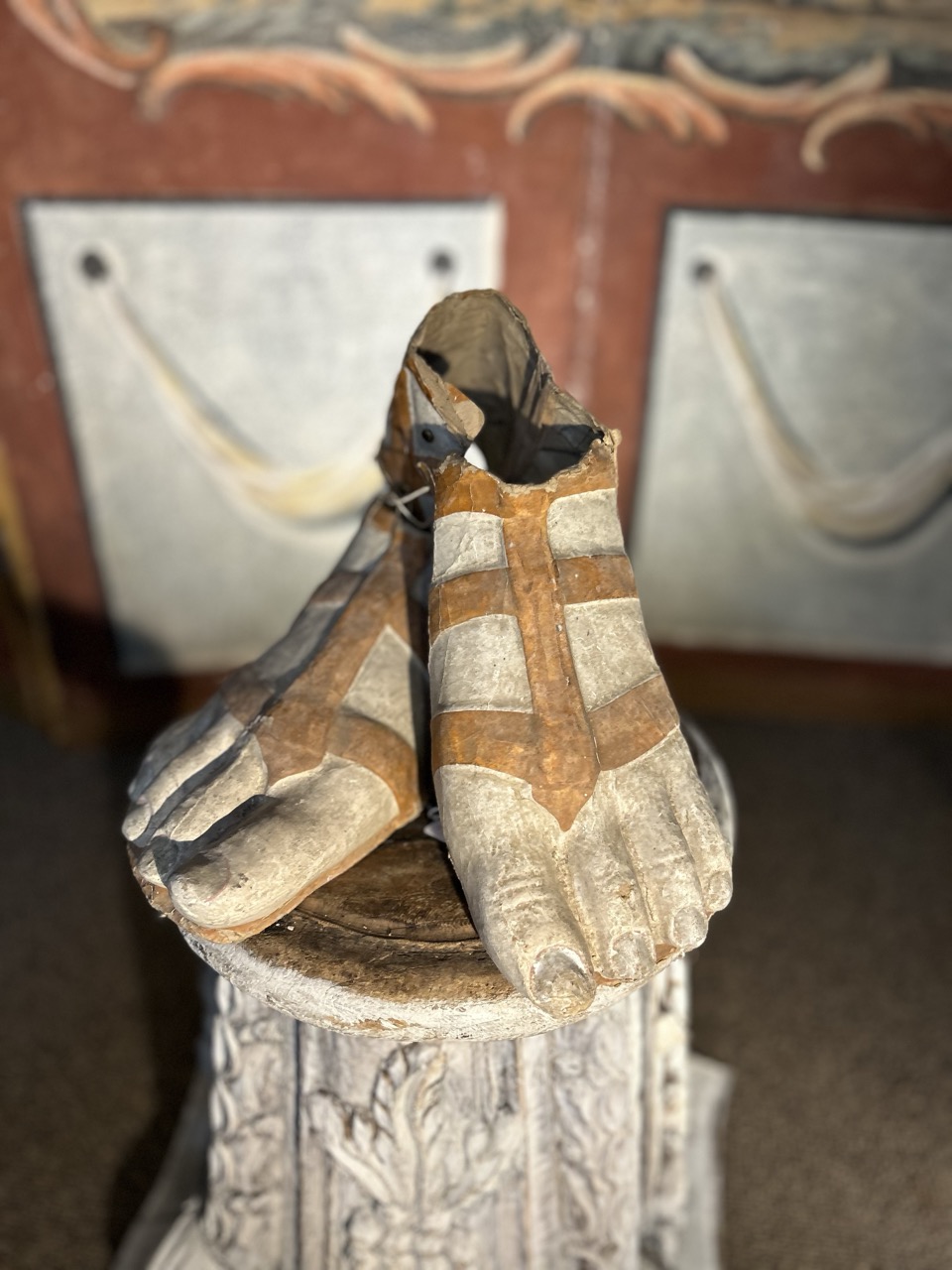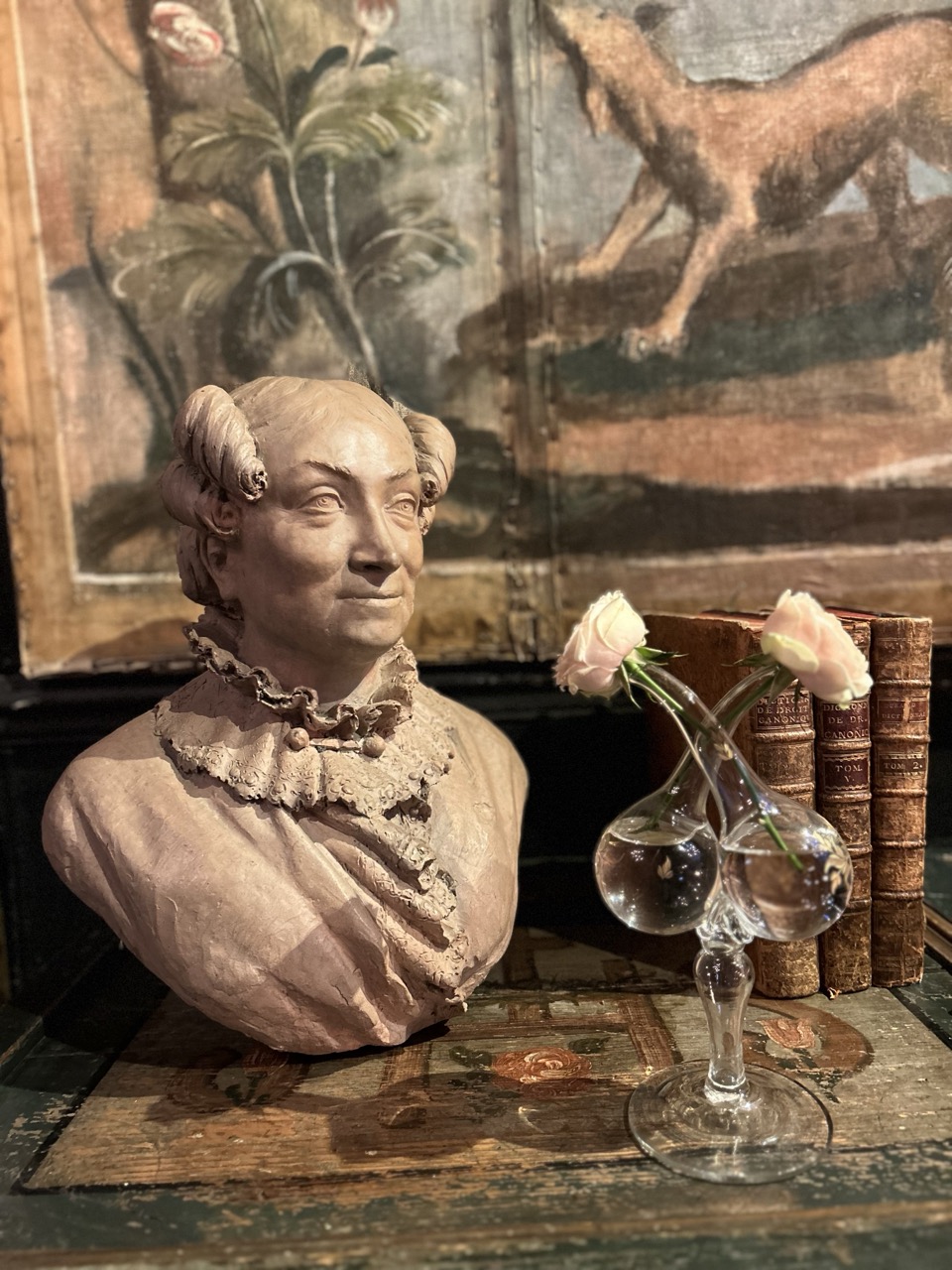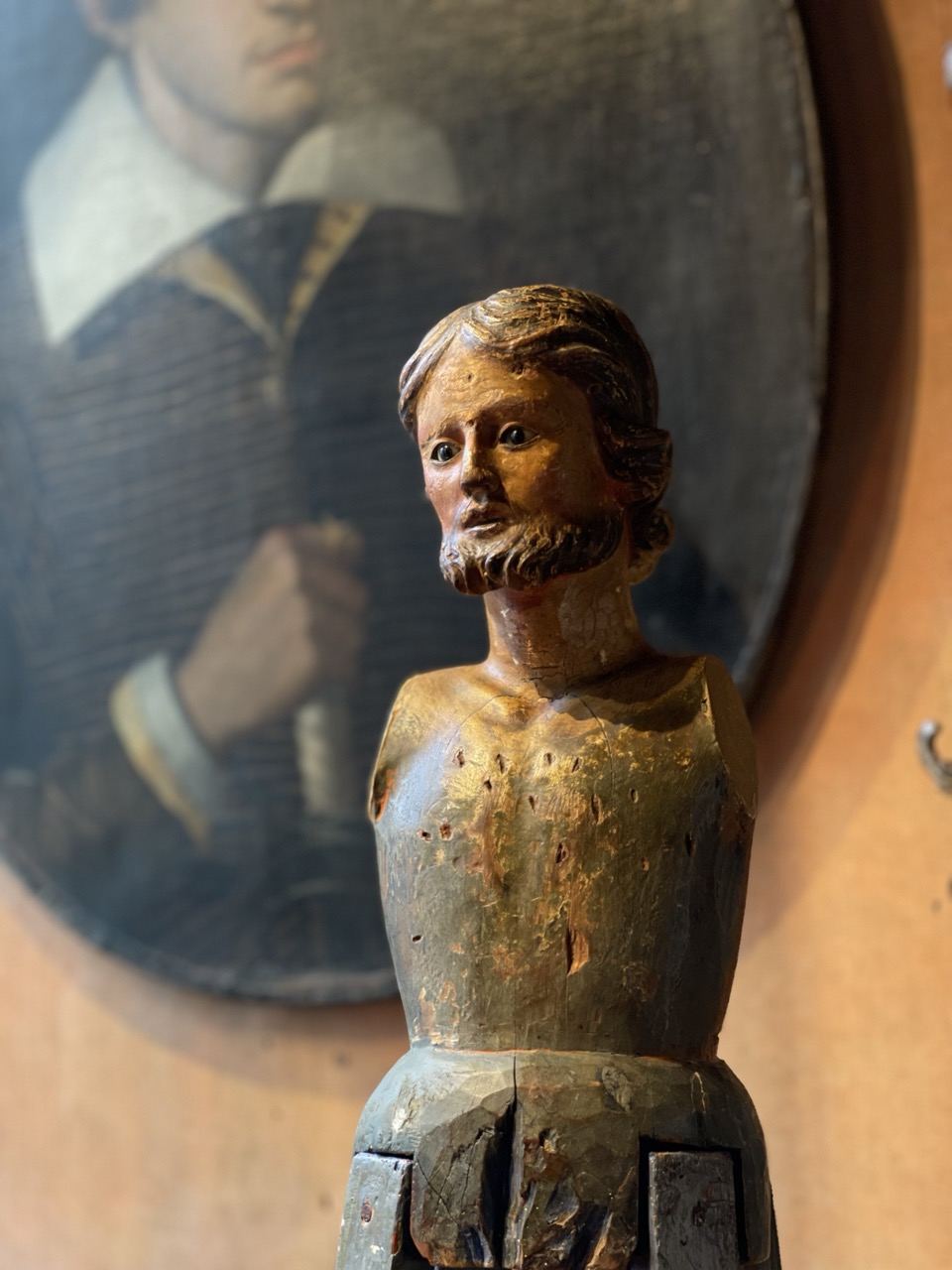Group featuring two gallant putti in the style of the eighteenth century, signed Badessi, marked in blue on the base.
The porcelain factory of Capo-di-monte (or Capodimonte) was founded in Naples in 1743 thanks to the support of King Charles of Bourbon, future Charles III of Spain. A manufacture dear to the heart of the King of Naples and his wife, Marie-Amélie of Saxony, Capodimonte essentially produces a statuary in soft porcelain inspired by Meissen porcelain. In the eighteenth century, its production is of rocaille style. It is marked with a fleur-de-lis. The departure in 1759 of Charles III for Spain provoked the gradual decline of the royal manufacture and the rise of the secondary workshops. Ferdinand IV, the new king of Naples, removed the privilege of the manufacture. It is at this time that the production becomes hard porcelain and is inspired by the excavations in Herculaneum and Pompeii, ancient cities discovered at the time. The mark takes the figure of Ferdinand under crown. In the 19th century, under the reign of Prince Murat, production opened to the middle classes, adopting a floral decorum. The manufacture made it its specialty. The royal porcelain manufacture of Capodimonte permanently switched off its ovens in 1821. In the second half of the 19th century, factories opened taking the name of porcelain of Capodimonte. Some like Majello still exist today.
Until 1790, the mark is the monogram with the letters entwined FRF, for Real Fabbrica Ferdinadea, painted in red or blue over the enamel. After 1790, it was replaced by an N crowned with blue used until 1834.
19th century
Naples, Italy
Height: 33 cm
Width: 42,5 cm

